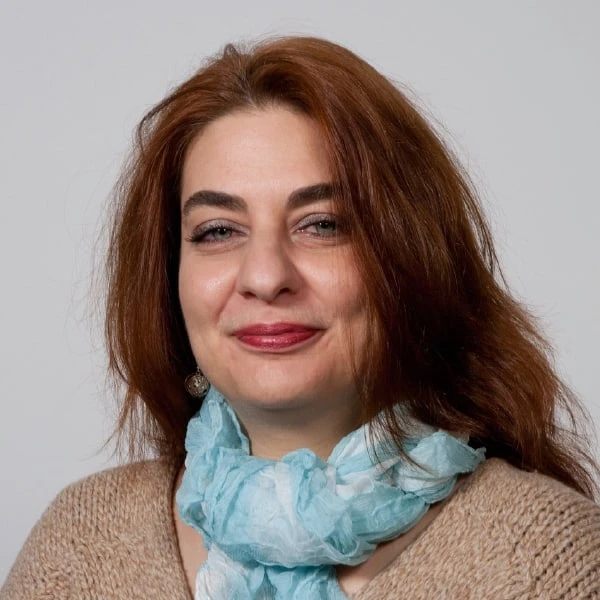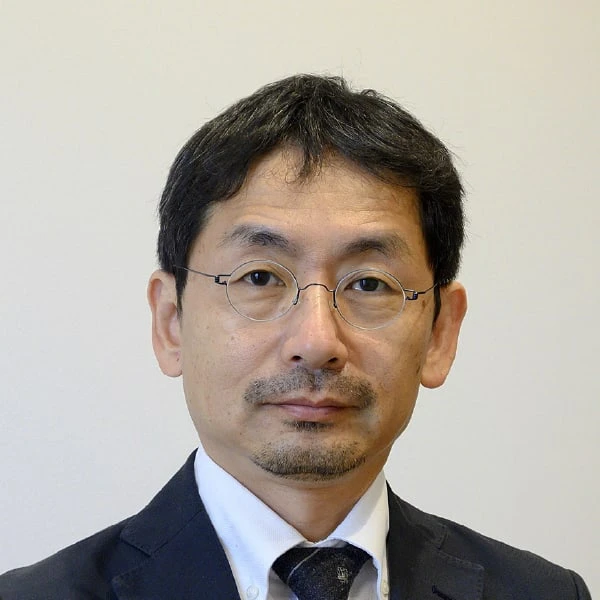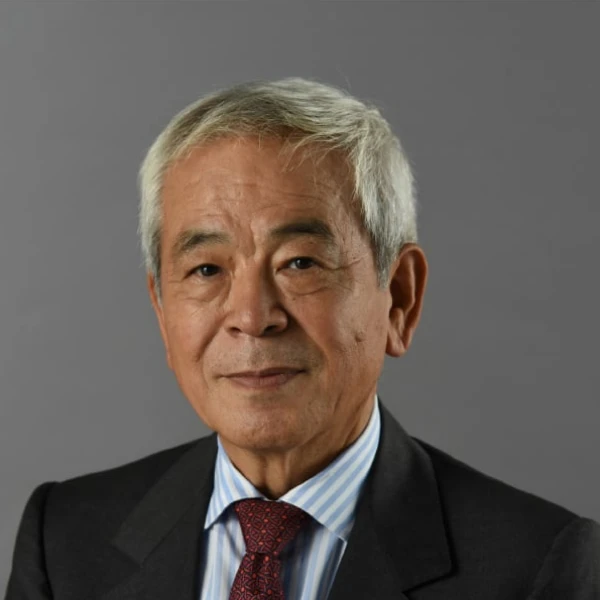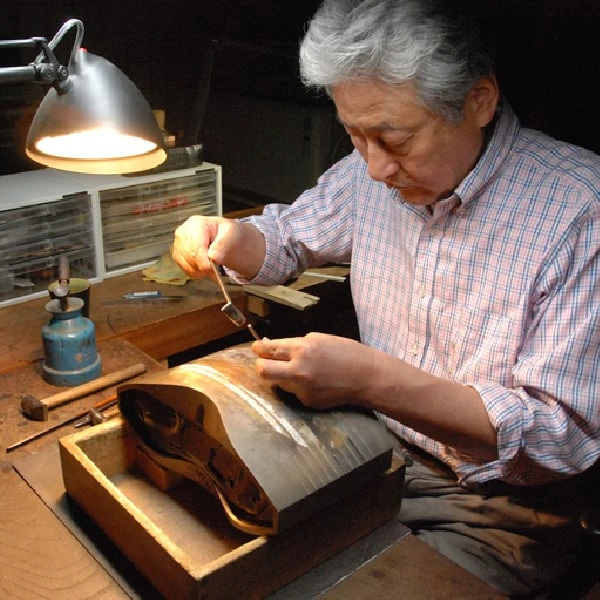Judges

Monika Bincsik (United States)
Diane and Arthur Abbey Curator for Japanese Decorative Arts, The Metropolitan Museum of Art, New York
Monika Bincsik is Diane and Arthur Abbey Curator for Japanese Decorative Arts at the Metropolitan Museum of Art, New York. She has organized numerous exhibitions for the museum, notably Kimono Style: The John C. Weber Collection (2022); Kyoto: Capital of Artistic Imagination (2019); Japanese Bamboo Art: The Abbey Collection (2017); and Discovering Japanese Art: American Collectors and the Met (2015). She has published extensively on Japanese decorative arts and collecting history, recently in Kimono Style: Edo Traditions to Modern Design (The Metropolitan Museum of Art, New York, 2022) and The Tale of Genji: A Japanese Classic Illuminated (The Metropolitan Museum of Art, New York, 2019).
Message
Particular sensitivity to technical mastery, quality of materials, and an elevated design sense can distinguish makers of art craft (kogei) objects. These days, when we experience the circulation of technical knowledge on a global scale, the increased availability of new materials, and the rediscovery of traditional mediums, kogei faces new challenges. One of the recurrent keywords is networking, as various connections between artistic circles, social practices, changing lifestyles, and media presence increasingly affect the creative process. I look forward to examining exciting and fresh kogei artworks submitted from all around the world.

Cho Hyeyoung (South Korea)
Chairperson, Korea Association of Art and Design
Born in 1969 in Seoul, South Korea. Cho received a BA with Honors in ceramics from the University of the West of England, Bristol School of Art and Design (U.K.). She holds an MFA in ceramics from Ewha Womans University (Seoul, South Korea), where she also completed a PhD in Art Theory/Visual Arts. She has served as an international commissioner for the Gyeonggi International Ceramics Biennale (2013), a guest curator for the Fondation d’entreprise Bernardaud CCC Céramique Contemporaine Coréenne exhibition (Limoges, France, 2016), an art director for the Cheongju International Craft Biennale (South Korea, 2015), a guest curator for the special exhibition Contemporary Korean Ceramics at the Victoria and Albert Museum (U.K., 2017-2018), an art director for Constancy and Change in Korean Traditional Craft at Milan Design Week (Italy, 2017), the secretary-general for the Korea Craft and Design Foundation (KCDF), an affiliate of South Korea’s Ministry of Culture, Sports and Tourism, and a curator for the Tongyeong Triennale 2022. She has curated numerous exhibitions and lectured in renowned institutions around the world such as the Metropolitan Museum of Art, Victoria and Albert Museum, Leeum Museum of Art and more. Cho serves as the commissioner for the LOEWE FOUNDATION Craft Prize for Korea as well as being on the expert panel.
Message
The Triennale of Kogei in Kanazawa has contributed much to the development of craft in Japan. Its role is invaluable and as part of the jury member I am truly honoured to be a part of this important event. Over the years, the creative works submitted to the Triennale exemplify the overall development of craft in the current times. From ancient skills to new technology the works shown at the Triennale parallels the trends of the time. The Triennale themes have reflected on the requirement of social, economic, and artistic transitions.

Lin Mun-lee (Taiwan)
Emerita Professor, National Taipei University of Education; Founder and Chairperson, MoNTUE Operating Committee; Former Director, National Palace Museum
Lin Mun-lee holds a doctoral degree in education from the University of Tokyo. Lin is currently emerita professor at National Taipei University of Education and founder and chairperson of the Museum of the National Taipei University of Education (MoNTUE) Operating Committee. She has served as director of the Taipei Fine Arts Museum and the National Palace Museum and chair of the National Culture and Arts Foundation (NCAF). In addition to curating international exhibitions and directing initiatives for corporate involvement in the arts, Lin has devoted her career to research and promotion of Taiwanese art history. In 2011, she founded MoNTUE, establishing an innovative museum vision. In her role at MoNTUE, Lin continues to direct experimental and cross-disciplinary exhibitions and performing arts programs, vigorously pursuing initiatives that engage the local community. For her long years of efforts to promote cultural and scholarly exchange and mutual understanding, in 2023 she was awarded the Order of the Rising Sun, Gold Rays with Neck Ribbon conferred in recognition of the achievements of non-Japanese.
Message
Craft (kogei) ties together people and objects. The development of civilization and the advancement of human culture is driven by the working of objects. As the French anthropologist Lévi-Strauss once stated, art alone provides a space in the universe for people to be themselves. Crafts have brought together the self and the other, humans and nature, people and their environments, promoting dialog with the self and playing a necessary and invaluable role in all correlations. The Triennale of Kogei in Kanazawa brings together traditional techniques and modern craftsmanship, combining and deepening them. I am sure that this triennial will continue to point the way, showing the potential of unconventional approaches and means of creative expression that surpass the imagination.

Karasawa Masahiro (Japan)
Director, National Crafts Museum
Born in 1964 in Nagoya, Aichi Prefecture. Karasawa holds a graduate degree in fine arts from the Aichi University of the Arts. After working as a curator at the Aichi Prefectural Ceramic Museum, in 2003 Karasawa accepted the post of chief researcher for the National Museum of Modern Art, Tokyo. In 2010, he became the director of the Crafts Division. He assumed his current post in 2020. In 2018, Karasawa was awarded the 39th Koyama Fujio Memorial Prize (Merit Award). Karasawa specializes in the history of modern and contemporary ceramics. He is a member of the Japan Ceramic Society Prize award committee. He is author of Kamabetsu gaido Nihon no yakimono: Seto [Kiln Guide, Japanese Ceramics: Seto] (Tankosha, 2002) and co-author of Nihon yakimonoshi [The Concise History of Japanese Ceramics] (Bijutsu Shuppansha, 1998), Yakimono wo shiru 12 no suteppu [Twelve Steps for Understanding Ceramics] (Tankosha, 2019), and other works. He has planned and overseen a wide variety of exhibitions, including Modern Crafts and Tea Utensils: Furnishings in Each Season (2021), Ceramics of the Past and of the Future: The Timelessness of Traditional Japanese Craft Arts (2022), Forms of Hitogata (2022), Pokémon×Kogei: Playful Encounters of Pokémon and Japanese Craft (2023), Shino Type by Suzuki Osamu, a Living National Treasure: In Commemoration of His Ninetieth Birthday (2024).
Message
Whether to define kogei in a broader sense or in a narrow sense is up to the artist. Whatever the case, regardless of how admirable the concept or idea of a work, if it is not accompanied by deep understanding of materials and solid mastery of technique, an artist cannot succeed in giving it material form. I have great expectations for the 2025 Triennale as an occasion for bringing together works that demonstrate a happy combination of imaginative concept and technical mastery, presenting the new values conceived by artists and their distinctive views of the world.

Aoyagi Masanori (Japan)
Director, Ishikawa Prefectural Museum of Art; Chair of the Board of Directors, Tama Art University; Former Commissioner for Cultural Affairs
Born in 1944 in Dalian. Aoyagi specializes in the art and archaeology of ancient Rome. He has served as dean of the Faculty of Letters, University of Tokyo, director of the National Museum of Western Art, and Commissioner for Cultural Affairs. Aoyagi is currently emeritus professor at the University of Tokyo, a member of the Japan Academy, chair of the Board of Directors of Tama Art University directors of Tama Art University, director of the Yamanashi Prefectural Museum of Art, director of the Archaeological Institute of Kashihara, Nara Prefecture, and director of the Ishikawa Prefectural Museum of Art. He has been involved with the excavation of ancient Roman archaeological sites in Italy for five decades. Aoyagi is recipient of numerous domestic awards including the NHK Broadcasting Culture Award (2011), the Medal of Honor with Purple Ribbon (2006), the Order of the Sacred Treasure, Gold and Silver Star (2017), and was recognized as a Person of Cultural Merit (2021). Internationally, he has received Italy’s Sebetia Ter International Award (2008), Torquato Tasso Award (2017), and Amedeo Maiuri International Archaeology Award (2019). He is a recipient of the Order of Merit of the Italian Republic (2002). His publications include Koteitachi no miyako Roma (Rome: The Metropolis of the Emperors), Roma teikoku (The Roman Empire), Bunka rikkokuron (Building a Nation of Culture), and Jinrui bunmei no reimei to kurekata (The Dawn and Dusk of Human Civilization).
Message
Japan can confidently take pride in its traditional crafts, whose quality speaks for itself. These crafts are the distillation of the country’s history, culture, climate and landscape as well as its people’s sensitivity and sense of art and beauty. Among the regions of Japan where making and using handcrafts has been passed down, such traditions are perhaps most concentrated in Hokuriku, the region along the Sea of Japan coast of Honshu Island. Attachment to traditional crafts is especially strong among the inhabitants of this area and they are particularly discerning in their appreciation of the quality of crafts. The Triennale of Kogei in Kanazawa stands out for its role in shining further light on the traditional crafts of Hokuriku.

Yamamura Shinya (Japan)
President, Kanazawa College of Art
Born in Chofu, Tokyo in 1960. After completing graduate studies at Kanazawa College of Art, he was active holding individual exhibitions and participating in special exhibitions in Japan and overseas. He joined the faculty of the Kanazawa College of Art in 1992. He pursues production and research centering on the precision and condensed decorative techniques for lacquer craft. His individual exhibitions have been held at Takashimaya Department Store, Miharudo Gallery, Gallery Ten, Ippodo Gallery, Silver Shell, Exhibition Space, and other venues. Among the special exhibitions where his work has been shown are: Revalue Nippon Project exhibition (Panasonic Shiodome Museum of Art), Art Crafting Towards the Future (Museum of Arts and Design/MAD), Cheongju Biennale Conference (Korea), Asian Lacquer International Symposium (State University of New York, Buffalo), and Art Crafting Towards the Future (21st Century Museum of Contemporary Art, Kanazawa). His works are in the collections of the following museums: Victoria and Albert Museum, National Galleries of Scotland, Los Angeles County Museum of Art, Seattle Museum of Art, Asian Art Museum, San Francisco, Ashmolean Museum, Smithsonian National Museum of Asian Art, Walters Art Museum, 21st Century Museum of Contemporary Art, Kanazawa, Hiroshima City University Art Museum, Kanazawa Utatsuyama Kogei Kobo, and Kanazawa Yasue Gold Leaf Museum.
Message
A sustainable future is about human beings coexisting with nature and passing on to next generations an environment and society of abundance. As part of that effort, craft too, while rooted in local culture and traditions, has made use of materials available and technology suited to the times and offered beauty and utility that is fresh and in tune with the times and the environment. The Triennale of Kogei in Kanazawa creates a space where tradition and innovation mingle and that respects diverse values. I hope it will prove to be the locus of another new chapter of cultural exchange where the attractions of crafts that transcend national borders and ethnicities can be shared and passed on to the future.

Nakagawa Mamoru (Japan)
Metalsmith; Living National Treasure (Metalworking)
Born in 1947 in Kanazawa, Ishikawa Prefecture. Nakagawa is the leading expert on Kaga metal inlay (Kaga zogan), a type of traditional decorative metalwork that utilizes engraving and chasing techniques. He was awarded the Japan Traditional Kogei Association Holder’s Prize at the Japan Traditional Kogei Exhibition in 2001 and 2003. In 2002, he received the MOA Museum of Art’s 13th Mokichi Okada Award for crafts. In 2004, Nakagawa was designated a Living National Treasure (“Holder of Important Intangible Cultural Property”) for metalwork (chokin). His work has been acquired by the Metropolitan Museum of Art (2008, 2020) and the British Museum (2010). Nakagawa is the recipient of the Medal of Honor with Purple Ribbon (2009) and the Order of the Sacred Treasure, Gold Rays with Neck Ribbon (2018). In addition to vigorously pursuing his own works, Nakagawa is committed to the training of upcoming artists, and provides instruction at institutions such as the Kanazawa Shokunin Daigakko (Kanazawa Crafts College) and Kanazawa Utatsuyama Kogei Kobo. Nakagawa is a emeritus professor at the Kanazawa College of Art.
Message
People’s lifestyles and their values regarding physical objects are shifting and becoming more diverse. As a result, the category of craft (kogei) has broadened, and works rich in artistic qualities have come into demand. I hope that this triennial will attract new sensibilities and draw creative works and dynamic pieces by upcoming artists from around the world—works that may show the viewers, creators, and the craft industry at large a possible direction for the future of crafts. I am pleased to express my great expectations for this triennial.

Toshio Ohi Chozaemon XI (Japan)
Japan Art Academy member; Artist
Born in 1958 as the eldest son of Ohi Chozaemon X of Kanazawa. In 1984 he completed the degree of Masters of Fine Arts at Boston University. His activities as an artist have been wide-ranging, including the nearly-4-meter-wide metal artwork for the UOB Bank lobby in Singapore, furniture designs for Salone Internazionale del Mobile, Milan, Italy, and designs for interiors and bottles; he is also winner of the Good Design Award for eyewear. His works have entered the collections of the British Museum (U.K.), Los Angeles County Museum of Art (U.S.), and elsewhere around the world. He is the recipient of many awards and commendations, including the Prime Minister of Japan Prize of the 54th Japan Contemporary Craft Exhibition, 8th Nitten Minister of Education, Culture, Sports, Science and Technology Prize, Knight’s Cross of the Order of Merit, Hungary, Japan Art Academy Award Imperial Prize, and the Foreign Minister’s Commendation in 2024.
Message
We have entered the age when human beings are learning from artificial intelligence and where we can feel nature in virtually created spaces. In such a world, how does craft need to transform itself from now on. Through all the ups and downs of the world, crafts created by human hands have comforted and sustained people’s minds and spirits. Rethinking materials and all of our cultures, we seek answers that resonate with the future.